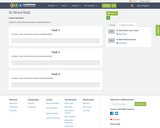
Contains cover sheet and teacher example/artifact.
- Subject:
- Composition and Rhetoric
- Elementary Education
- Language, Grammar and Vocabulary
- Speaking and Listening
- Material Type:
- Lesson Plan
- Author:
- Johanna Richards
- Date Added:
- 05/22/2019

Contains cover sheet and teacher example/artifact.
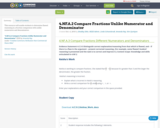
This resource will enable students to determine flawed reasoning in a fraction comparison with unlike numerators and denominators.

This packet assists parents and teachers transition to distance learning.
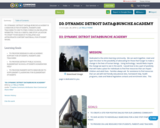
D3: DYNAMIC DETROIT DATA@ BUNCHE ACADEMY IS A RESOURCE FOR STUDENTS, PARENTS AND TEACHERS TO USE TO FIND CURRICULUM RELATED WEBSITES. THIS IS A USEFUL ONE STOP LOCATION TO START YOUR SEARCH TO RELATED AGE APPROPRIATE CONTENT MATERIAL FOR STUDENT WORK.

Description: Don’t be fooled by food messaging is a media literacy embedded health unit that takes the health goals of maintaining a healthy lifestyle and adds some critical thinking skills and communication skills. In food marketing young people are surrounded by persuasive claims meant to influence and manipulate their eating behavior. Students will explore some of the techniques and strategies food marketers use to influence their eating behavior to better understand how it impacts their own food choices. Within the PE program students will discuss how food choices, levels of consumption and physical activity levels influence health and wellness. Body image/healthy weight will be incorporated into this content. The culminating projects require students to work collaboratively to synthesize their new learning while using a variety of strategies to create their own healthy choices messaging production projects.
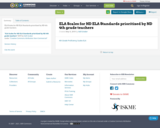
ELA Scales for ND ELA Standards prioritized by ND 4th grade teachers.
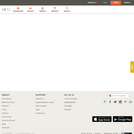
CK-12's Grade 4 Elementary Math is a series of videos and interactive videos designed to teach basic math concepts to 4th graders. Concepts covered include Addition and Subtraction, Multiplication and Division, Multiple Operations and Grouping, Place Value, Decimals, Time, Money, Measurement, and Geometry.
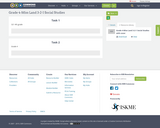
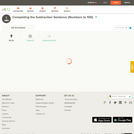
This video and accompanying interactive assessment practice was designed to teach completing the subtraction sequence to first graders.
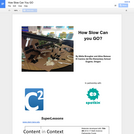
A lesson plan for 4th grade science. Kids create a version of the marble roll project to simulate a manufacturing process.
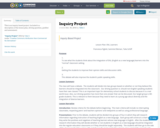
This is an inquiry based project. Included is a description of the lesson plan, driving question, grabber and assessment.
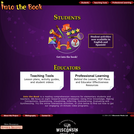
The "Into the Book" web site is designed to help elementary students practice eight reading comprehension strategies through playful interactive activities. The site focuses on eight research-based strategies: Using Prior Knowledge, Making Connections, Questioning, Visualizing, Inferring, Summarizing, Evaluating and Synthesizing. "Behind the Lesson," the teacher area of the site, provides information, lesson plans and other resources for teachers.
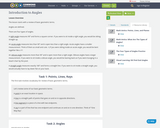
The lesson starts with a review of basic geometric terms.Angles are defined.There are four types of angles.A right angle measures 90° and forms a square corner. If you were to sit inside a right angle, you would be sitting straight up.An acute angle measures less than 90° and is open less than a right angle. Acute angles have a smaller measurement. Think of them as small and cute. =) If you were sitting inside an acute angle, you would be bent together like a 'V'.An obtuse angle measures more than 90° and is open more than a right angle. Obtuse angles have a larger measurement. If you were to sit inside a obtuse angle, you would be leaning back as if you were lounging in a beach chair by the pool.A straight angle measures exactly 180° and forms a straight line. If you were to sit inside a straight angle, you would actually have to lay down flat on your back.

Subject/Course: English
Topic / Unit: My Friends (Physical Appearance)
Grade: 4
Duration: 5 minutes
Lesson Objectives: Students will be able to understand the main point in short, clear, simple messages and announcements (e.g., describing people and their features).
Materials/Resources: Presentation
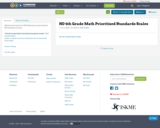
Mathematics Scales for ND Mathematics prioritized by ND 3rd grade teachers.

In this activity/project, students are able to look through a slide show of information about the planets in our solar system (with the exception of Earth) and select a planet to "visit." Students will then write a postcard home describing the planet they were able to visit.

This Immersion Unit provides a coherent series of lessons designed to guide students in developing deep conceptual understanding that is aligned with the National standards, key science concepts, and essential features of classroom inquiry (as defined by the National Science Education Standards). The goal of this unit is to provide students with an opportunity to explore the interdependency of living and nonliving factors in an ecological system. Students investigate the process of decomposition and examine the role that decomposers and other organisms play in the transfer of energy and matter. The Unit's overarching concepts are: Organisms need matter and energy to live. Science knowledge advances through inquiry. This unit was developed through the large Math and Science Partnership project called System-wide Change for All Learners and Educators (SCALE), involving a collaboration among Los Angeles School District educators, California State University science and education faculty, and UW-Madison SCALE staff.
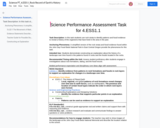
This performance assessment aligns with NGSS Performance Expectation 4.ESS1.1 and is intended to be used as an interim assessment. These assessments can either be used summatively, as an end of learning activity, or formatively, utilizing student responses to identify next instructional steps.
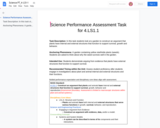
This performance assessment aligns with NGSS Performance Expectation 4.LS1.1 and is intended to be used as an interim assessment. These assessments can either be used summatively, as an end of learning activity, or formatively, utilizing student responses to identify next instructional steps.

This is an activity that includes student's own ideas and beliefs about the central ideas and important parts of the text. Students will also do a bit of writing to support their opinions. This activity gets at the heart of a text. I see this as introductory to deeper dives into theme. This lesson could be structured to be online or face to face. This is written as a class activity but an online discussion could easily be created after students had followed the protocol a few times and seen the discussion that results. This could easily work in many classrooms through high school.